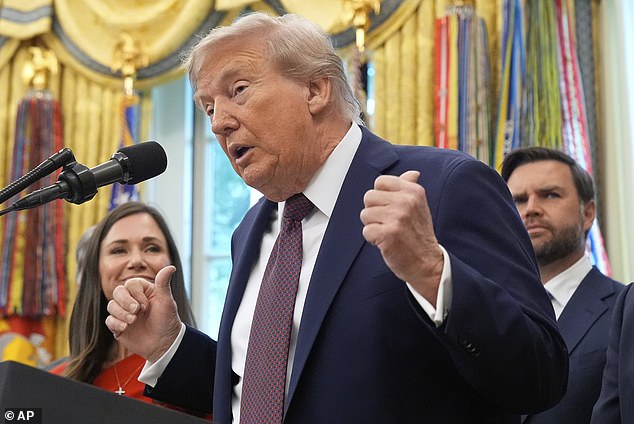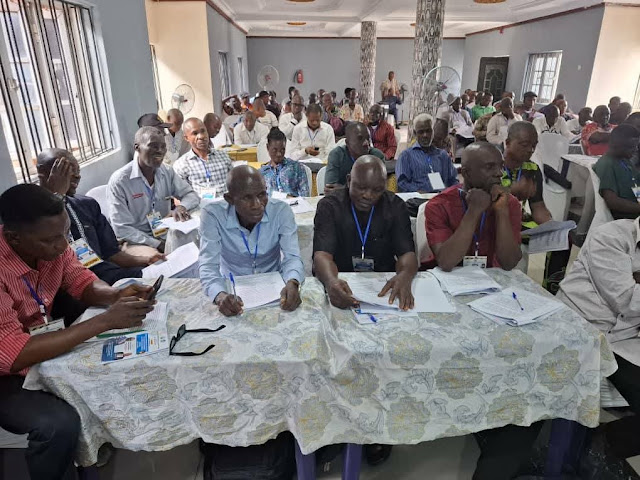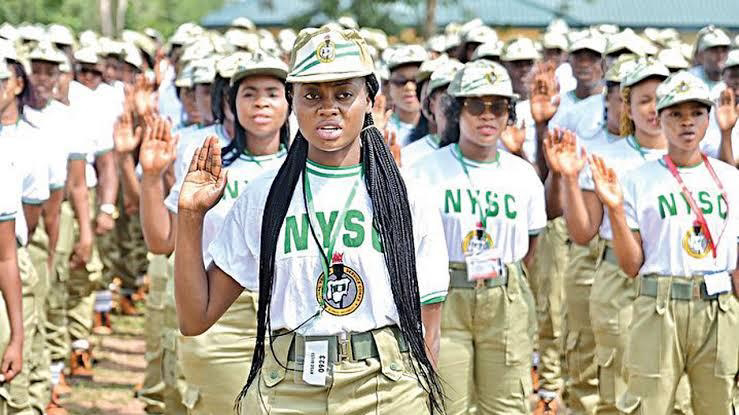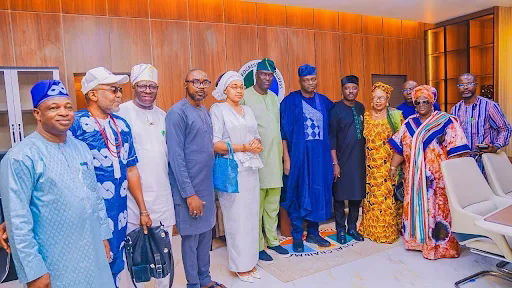In a striking display of resilience and defiance, President Donald Trump addressed swirling rumors about his health and supposed death during a White House event on September 2, 2025, calling them “so fake” and attributing them to a biased media narrative. The speculation, which gained traction over the Labor Day weekend, stemmed from the President’s uncharacteristic absence from public view for several days, sparking a viral frenzy on social media platforms. The rumors, ranging from claims of serious illness to outright assertions of his demise, were fueled by a combination of his lack of public appearances, visible health indicators like a bruised hand, and a polarized online environment. Trump’s response, delivered with his signature bravado, not only quashed the rumors but also highlighted the broader dynamics of misinformation, political rivalry, and public fascination with his health at the age of 79.
The Genesis of the Rumors
The Labor Day weekend of 2025 became an unexpected flashpoint for speculation about President Trump’s well-being. Following a marathon Cabinet meeting on August 26, which lasted over three hours, Trump had no public events scheduled for six days, an unusual break for a leader known for his relentless public engagement. This absence, coupled with recycled images of a bruised hand and reports of swollen ankles, provided fertile ground for conspiracy theories to take root. Social media platforms, particularly X and TikTok, erupted with hashtags like #whereistrump and #trumpisdead, amassing millions of views and engagements as users speculated about a potential health crisis or cover-up.
The rumors were further amplified by liberal influencers and commentators who seized on Trump’s absence to question his health. Some pointed to a July statement from the White House, which revealed that Trump had been diagnosed with chronic venous insufficiency, a condition that can cause leg swelling. Others highlighted a visible bruise on his right hand, which the White House attributed to frequent handshaking and aspirin use, but which critics claimed was evidence of a more serious condition. The lack of transparency from Trump’s medical team, coupled with his age—he is the oldest person to be inaugurated as president—added fuel to the fire.
By Friday, August 29, the absence of Trump from public view had sparked a wave of online chatter. A post by a prominent diplomatic correspondent noting that Trump had no public events scheduled and had not been seen that day garnered millions of views, igniting further speculation. Another account, humorously named “Did Donald Trump Die Today?”, jokingly suggested his death, amplifying the narrative. The rumors reached a crescendo over the weekend, with millions of posts, memes, and videos circulating, some claiming Trump had suffered a stroke or other medical emergency.
Trump’s Response: A Robust Rebuttal
On September 2, President Trump returned to the public stage with a White House event announcing the relocation of the U.S. Space Command headquarters from Colorado to Alabama. The event provided the perfect platform to address the rumors head-on. When asked by a Fox News correspondent how he learned he was supposedly dead, Trump responded with a mix of amusement and indignation. “No, I didn’t see that,” he said, adding that he was unaware of the specific death rumors but had heard reports of concern about his well-being. “It’s sort of crazy… It’s so fake,” he declared, dismissing the speculation as “fake news” and criticizing the media for what he described as a lack of credibility.
Trump used the opportunity to contrast his situation with that of his predecessor, Joe Biden, whom he accused of going months without public appearances without facing similar scrutiny. “I didn’t do any [events] for two days, and they said there must be something wrong with him. Biden wouldn’t do them for months, and nobody ever said there was anything wrong with him,” Trump remarked, taking a swipe at both the media and Biden’s presidency. He emphasized his activity over the weekend, noting that he had conducted interviews, played golf at his Virginia resort, and posted extensively on Truth Social, his social media platform.
The President’s remarks were delivered with his characteristic energy, as he held court for nearly 50 minutes, taking questions from reporters and engaging with allies. His appearance, described as lively and robust, served as a powerful rebuttal to the rumors. Trump’s physical presence and sharp commentary dispelled any notions of frailty, reinforcing his image as a tireless leader. He also used the moment to highlight what he described as his administration’s successes, including a reported decline in crime in Washington, D.C., which he attributed to his policies.
The Role of Social Media in Amplifying Misinformation
The rapid spread of the rumors underscores the power of social media in shaping public narratives, particularly in a polarized political climate. Platforms like X and TikTok became breeding grounds for speculation, with liberal influencers and ordinary users alike contributing to the frenzy. Videos questioning Trump’s whereabouts or health garnered millions of views, while hashtags like #trumpisdead trended globally. Even a progressive commentator’s attempt to debunk the rumors, by pointing to photos of Trump golfing, amassed nearly two million views, illustrating the viral nature of the discourse.
The speculation was not limited to social media. Mainstream media outlets also picked up on the story, with some reporters noting Trump’s absence as unusual given his typically high-visibility schedule. The combination of social media chatter and media attention created a feedback loop, amplifying the rumors and drawing in a broader audience. This phenomenon highlights the challenges of combating misinformation in an era where unverified claims can spread faster than official statements.
Trump’s team was quick to respond to the rumors, with White House Press Secretary Karoline Leavitt issuing a statement dismissing the speculation as “baseless” and accusing “Democrat activists and left-wing lunatics” of pushing a false narrative. Leavitt emphasized Trump’s transparency about his health, contrasting it with Biden’s presidency, which she claimed was marked by limited public engagement. The White House also pointed to Trump’s activities over the weekend, including golf outings with his grandchildren and an interview with a conservative outlet, as evidence of his vitality.
Health Speculation and Public Fascination
The rumors about Trump’s health were not entirely new. Since his first term, questions about his physical and mental well-being have been a recurring theme, often fueled by his own reluctance to provide detailed medical information. Unlike many modern presidents, Trump’s physicians have not held regular press briefings, and there was no medical update following an assassination attempt against him in Pennsylvania the previous summer. This opacity has allowed critics to speculate freely, pointing to visible signs like bruises or swelling as evidence of underlying issues.
The White House’s explanation for Trump’s bruised hand—attributed to frequent handshaking and aspirin use—did little to quell the speculation. Critics noted that the bruise was sometimes covered with makeup, suggesting an attempt to conceal it. Similarly, the diagnosis of chronic venous insufficiency, a common condition among older adults, was met with skepticism by those who believed it masked more serious health concerns. Trump’s age, coupled with his high-profile role, made him a lightning rod for such speculation, as the public and media scrutinized every visible sign of aging or frailty.
The fascination with Trump’s health also reflects broader cultural anxieties about leadership and mortality. As the oldest president to take office, Trump’s physical condition is a point of interest for both supporters and detractors. Supporters view his energy and stamina as evidence of his fitness to lead, while critics seize on any perceived weakness to question his ability to govern. This dynamic was evident in the Labor Day rumors, which were driven as much by political rivalry as by genuine concern.
A Weekend of Activity
Contrary to the rumors, Trump’s Labor Day weekend was far from idle. He was spotted golfing at his Trump National Golf Club in Virginia on three consecutive days—Saturday, Sunday, and Monday—often accompanied by his grandchildren, Kai and Spencer Trump. These outings, captured by photographers, provided visual evidence of his activity, though they did little to stem the initial wave of speculation. Trump also conducted an hour-long interview with a conservative outlet on Friday, further demonstrating his engagement.
On Truth Social, Trump was prolific, posting over 90 times between Saturday and Monday. His posts covered a range of topics, from crime reduction in Washington, D.C., to criticisms of mail-in voting and a bizarre rant about a White House Rose Garden worker damaging a piece of stone. One post, in particular, addressed the health rumors directly, with Trump declaring, “NEVER FELT BETTER IN MY LIFE.” The post, which also touted D.C. as a “crime-free zone,” was a characteristic blend of bravado and hyperbole, aimed at silencing his critics.
Trump’s golf outings, a frequent activity during his presidency, also drew attention. According to reports, he had golfed 56 times in the first 223 days of his second term, a pace that has sparked debate about the cost to taxpayers and the optics of a president spending significant time on the course. For Trump’s supporters, however, these outings were proof of his vitality, as they countered the narrative of a frail or ailing leader.
Political Context and Media Dynamics
The Labor Day rumors must be understood in the context of a deeply polarized political landscape. Trump’s presidency has been marked by intense scrutiny from opponents, who often amplify any perceived weakness to undermine his leadership. The media, too, has played a role in this dynamic, with some outlets quick to report on the rumors without sufficient verification. Trump’s accusation of “fake news” reflects his longstanding distrust of the press, which he has accused of bias and sensationalism throughout his political career.
At the same time, Trump’s own behavior has contributed to the speculation. His reluctance to provide detailed medical updates, combined with his penchant for dramatic public appearances, creates a vacuum that invites conjecture. The White House’s decision to attribute his bruise to handshaking, for example, was seen by some as an inadequate explanation, fueling further questions. This tension between transparency and opacity has defined much of Trump’s public life, making health rumors a recurring challenge.
The Broader Implications
The episode highlights broader issues about misinformation, trust, and the role of social media in modern politics. The rapid spread of the death rumors demonstrates how quickly unverified claims can gain traction, particularly in an environment where distrust in institutions is high. For Trump’s critics, the rumors were an opportunity to question his leadership and highlight concerns about his age and health. For his supporters, they were evidence of a biased media and a concerted effort to undermine a popular president.
The incident also underscores the challenges of governing in the digital age, where speculation can outpace facts. Trump’s ability to dispel the rumors with a single public appearance highlights the power of visibility in countering misinformation, but it also raises questions about the need for greater transparency. As the oldest president in U.S. history, Trump’s health will likely remain a point of public interest, requiring his administration to navigate these challenges with care.
Moving Forward
President Trump’s robust response to the Labor Day rumors reaffirmed his presence and vitality, but the episode is unlikely to be the last of its kind. As long as he remains in the public eye, speculation about his health will persist, driven by a combination of political rivalry, media scrutiny, and public curiosity. For now, Trump has made it clear that he is very much alive, active, and ready to lead, dismissing the rumors as a distraction from his administration’s achievements.
The White House event on September 2 not only quashed the rumors but also served as a platform to advance Trump’s agenda, including the relocation of the Space Command headquarters. By addressing the speculation directly, Trump turned a moment of vulnerability into an opportunity to reinforce his image as a resilient and defiant leader. As he continues his second term, the interplay between his health, public perception, and political strategy will remain a defining feature of his presidency.







